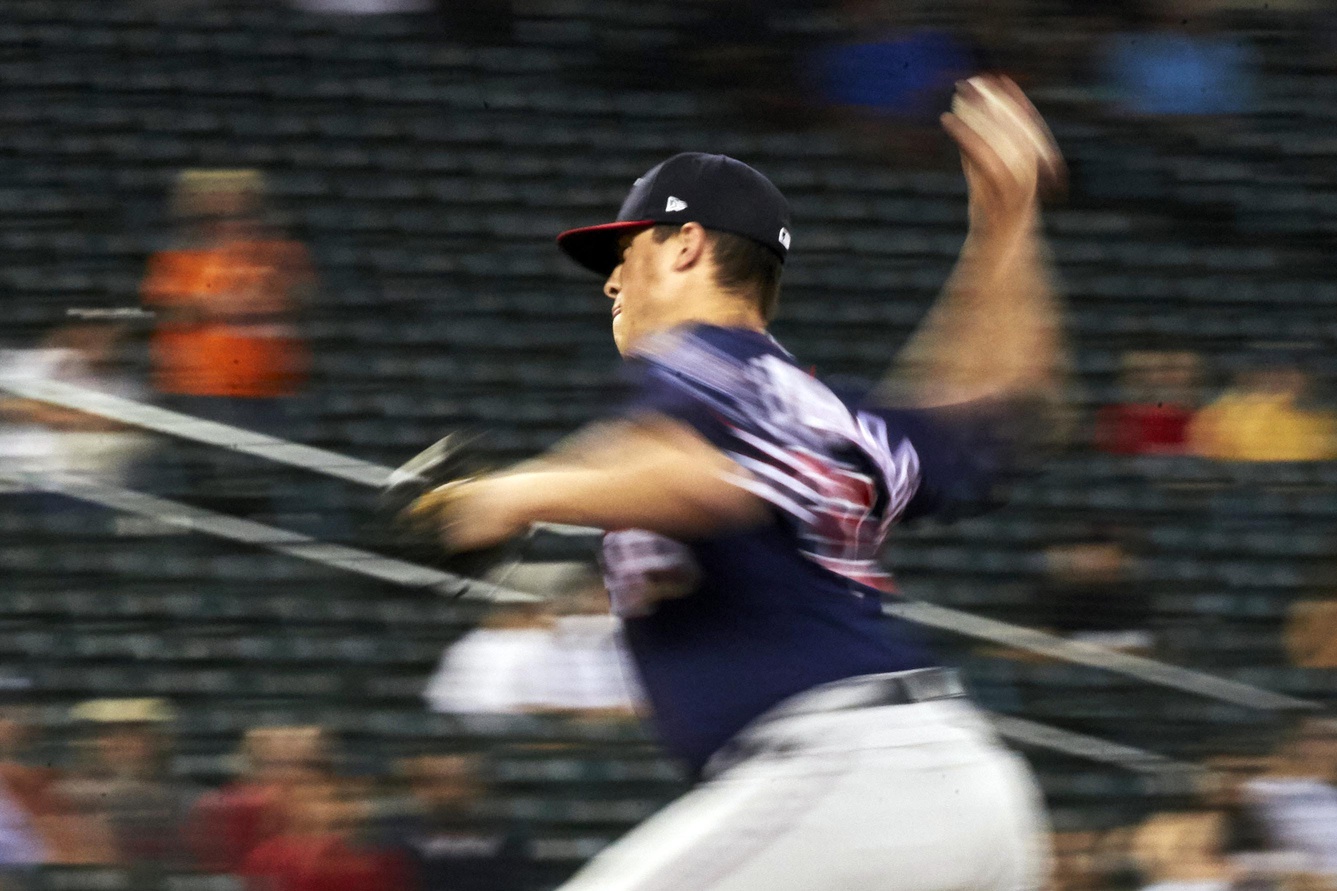
Twins Video
This is the second part of a three-part series of interviews with Twins bounceback candidates. Part 1.
Maybe that’s because we saw it happen, or maybe we already invested our emotions in the turnaround last year, so there’s nothing left. Whatever the reason, I don’t think it’s because the player is less likely to come back. Certainly, the two Twins players who fit that description seem hopeful, even anxious, for the season to begin. Their success could make a world of difference to the Twins bullpen.
Addison Reed
The plan for last year was for Addison Reed, who had been signed for a two-year, $17 million contract, to be the Twins bullpen’s cornerstone. He was early, posting a 2.83 ERA and 9.3 K/9 through the end of May. But his effectiveness and strikeout rate plummeted in June. Then in July he was on the disabled list for three weeks with an elbow inpingement.
He never really got back on track. The numbers tell the story. Reed threw 28.2 innings in the first two months of the season, striking out 29 batters. He threw almost the same number of innings in the last four months of the season - 27.1, and struck out just 15. All his pitching stats - ERA, WHIP, hits - fell apart over those last four months, as did the Twins reliance on him.
So what happened? “I ran into some arm troubles midseason. It’s one of those things that just caught up to me,” says Reed. He adds, “My workload in 2016 and 2017 was pretty heavy.”
Yes, yes it was. Reed pitched in 157 games over those two years, throwing 143.2 innings. But that’s not all. “This is the first offseason in four years where I didn’t have to play extra baseball in the playoffs,” adds Reed. The postseason adds four games and 3.1 innings to that total, along with a shorter offseason for recovery.
That kind of workload is one of the reasons the Twins signed Reed. So the injuries and ineffectiveness came as a surprise, especially after his strong start. “I felt fine, everything felt fine, but something can still pop up out of nowhere,” laments Reed. “I think that’s what happend. I felt fine. I didn’t change anything. I was doing everything the same.”
So the plan this year is rely on last year’s relatively easy workload to give his arm the rest he needed to recover. “With the limited workload last year, I think things are going to be good this year,” Reed says. With only 56 innings last year and no postseason, his arm certainly got some extra rest.
It’s also worth noting (although it was unsaid by Reed), that Reed was on pace for a career high mark in games and innings through April and May last year. That last week of May, he was used five times in seven days, including four days in a row. Changes to the coaching staff, along with a more measured approach might also help with a return to form.
Trevor Hildenberger
Despite being a rookie, Trevor Hildenberger was also supposed to be one of the pillars of the Twins 2018 bullpen. His impact late in the 2017 was as explosive as his side-arm delivery, racking up 44 strikeouts in 42 innings. The only concern was that he had faded in September; his ERA climbed from 2.29 to 3.21 over his last eight games.
His 2018 started out well enough. Even after a below average April, he rebounded to a 3.33 ERA and an even better 1.13 WHIP through the All-Star break. Opponents had just a .689 OPS against him. But the second half was a disaster. His ERA was 9.00 over that half with opponents knocking a .974 OPS against him. Was he, like Reed, battling injuries?
“I felt good. I felt healthy. My body felt fine. My arm felt fine,” says Hildenberger. Instead, he thinks the problem was with his command. “Inconsistencies led to that,” Hildenberger says. “My fastball command got away from me a little bit. So I worked on that this offseason, and in spring training I’m working on that, and hopefully get back to where I was at the end of 2017.”
What kind of training does one do to fix command? “It’s mechanics for me, so i worked on keeping my front shoulder closed before my foot landed, and separating my hips and my shoulders in my delivery,” reveals Hildenberger. “if they’re firing together that’s when the ball starts to spray a lot more.”
Hildenberger’s sidearm delivery means that when he misses his spot, the ball tends to miss side to side, rather than up and down. Since he’s throwing to the outside or inside edge of the strike zone, that presents a problem. “You’re missing either by a long ways, so it’s an easy take. Or you leave it over the middle,” Hildenberger explains.
Again it’s worth noting that Hildenberger was called into action 43 times before the All-Star break, due to being so effective. That’s again pretty heavy usage for a reliever. It’s conceivable that more conservative usage by a new coaching staff could pay off in more success over the course of a long season.
The Twins had two key components of their bullpen last year succeed early and fall apart midseason. The two showed different symptoms, and have addressed their struggles differently this offseason. But both also had extremely high usage for relievers early in the year. Perhaps the struggles we saw over the second half of the season can be remedied by individual offseason efforts, combined with a team approach to usage.
MORE FROM TWINS DAILY
— Latest Twins coverage from our writers
— Recent Twins discussion in our forums
— Follow Twins Daily via Twitter, Facebook or email
— Become a Twins Daily Caretaker






Recommended Comments
Join the conversation
You can post now and register later. If you have an account, sign in now to post with your account.
Note: Your post will require moderator approval before it will be visible.